Home>Articles>What Is In The Center Of The Dining Room Table?
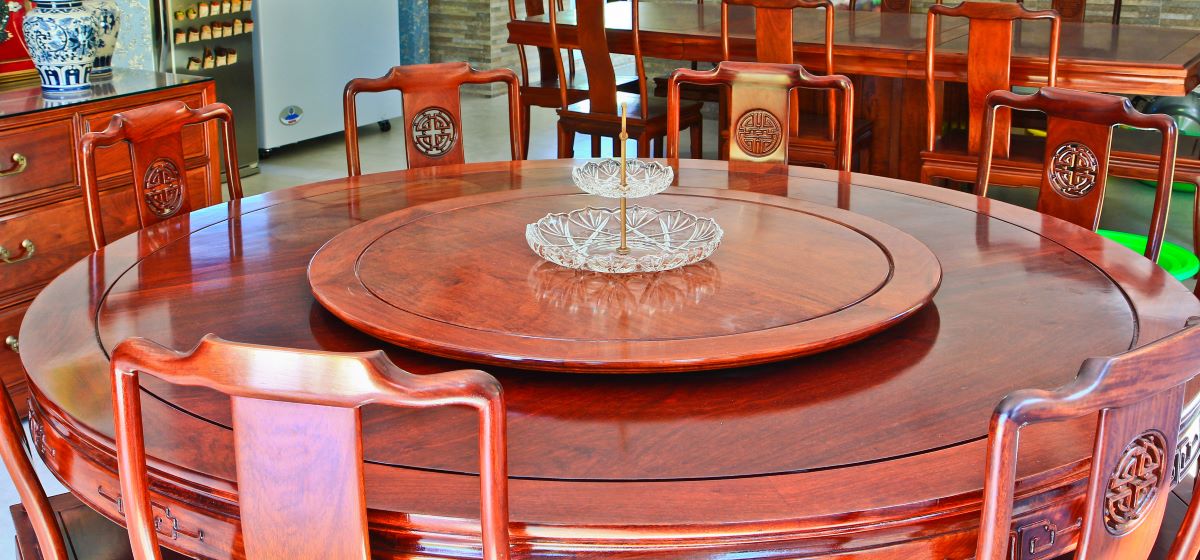

Articles
What Is In The Center Of The Dining Room Table?
Modified: February 25, 2024
Discover the essential articles that belong in the center of your dining room table. Create a stylish and functional centerpiece with our helpful tips and ideas.
(Many of the links in this article redirect to a specific reviewed product. Your purchase of these products through affiliate links helps to generate commission for Storables.com, at no extra cost. Learn more)
Introduction
The dining room is a place where families and friends gather to enjoy meals and create lasting memories. It is often considered the heart of a home, and as such, the dining room table takes center stage in this important space. The dining room table is not only a functional piece of furniture but also an opportunity to showcase personal style and set the overall ambiance of the room.
In addition to the chairs, plates, and cutlery, there is often a focal point in the center of the dining room table that attracts attention and adds visual interest. This focal point can change according to personal taste, season, or occasion. In this article, we will explore the various items that can be found in the center of a dining room table and their significance.
Whether you have a large dining table or a small one, the center is a space that can be utilized to add beauty and charm to the room. It allows you to express your creativity and create a welcoming atmosphere for your guests. Let’s delve into the historical significance of the dining room table and the common items found at its center.
Key Takeaways:
- The center of the dining room table is a versatile space that allows for the expression of personal style and the creation of a warm and inviting atmosphere for guests, with options ranging from decorative centerpieces to functional items.
- By carefully considering the historical significance of the dining room table, individuals can appreciate its role as the heart of the home and a gathering place for family and friends, and use various decorative and functional elements to create a visually appealing and practical dining experience.
Historical Significance of the Dining Room Table
The dining room table has a long and rich history that dates back centuries. In ancient times, communal dining was a common practice, with families and communities gathering around a central table to share meals and engage in conversation.
During the Middle Ages, the concept of the dining room started to take shape, as the social hierarchy became more defined. The dining table became a symbol of wealth and status, with elaborate feasts being hosted by kings and nobles. These tables were often massive and made of expensive materials, such as oak or mahogany.
In the 16th and 17th centuries, dining tables began to evolve further. They became more versatile, with the introduction of extension tables that could be adjusted in size to accommodate different numbers of guests. These tables were also adorned with intricate carvings and decorative elements, reflecting the artistic styles of the era.
By the 18th century, the dining table became a focal point of the dining room, with families gathering around it for meals and socializing. It became a place to showcase fine dining sets, elegant table linens, and luxurious centerpieces.
In modern times, the dining room table continues to hold cultural significance. It represents a place of gathering, where families and friends come together to share food, laughter, and conversation. It is a space that fosters connections and strengthens relationships.
The historical significance of the dining room table reminds us of its importance beyond its practical function. It is a symbol of hospitality, tradition, and togetherness. Whether it’s a formal dinner party or a casual gathering, the dining room table embodies the essence of communal dining.
Now that we understand the historical context of the dining room table, let’s explore the common items that can be found in the center of this important piece of furniture.
Common Items Found in the Center of the Dining Room Table
The center of the dining room table provides an opportunity to showcase decorative elements that enhance the overall aesthetic of the space. These items can vary depending on personal style, season, or special occasions. Here are some common items found in the center of a dining room table:
- Decorative Centerpieces: A centerpiece is a classic choice for the dining room table and can instantly elevate its appearance. This can be a vase filled with flowers, a bowl of decorative objects, or a statement piece that catches the eye. Centerpieces can be tailored to match the style and color scheme of the room.
- Fresh Flowers or Plants: Bringing the beauty of nature indoors, a bouquet of fresh flowers or a potted plant adds a refreshing touch to the dining room table. Flowers can be chosen to match the season or to complement the existing decor. Not only do they add color and fragrance, but they also create a lively and inviting atmosphere.
- Seasonal Decorations: Many people enjoy decorating their dining room table according to the season or a specific holiday. For example, during the winter holidays, a festive centerpiece with ornaments and candles can create a warm and cozy ambiance. In the spring, a vase of vibrant tulips can bring a touch of freshness and renewal.
- Candles or Candle Holders: Candles are a versatile choice for the dining room table. They can be used to create a romantic atmosphere for a special occasion or simply to add a soft and warm glow during everyday meals. Candle holders in various styles and materials, such as metal or glass, can further enhance their visual impact.
- Fruit Bowls or Fruit Displays: A bowl filled with fresh fruits serves both a decorative and functional purpose. It adds a pop of color to the table and also provides a healthy snack for guests to enjoy. Displaying fruits in an artistic manner, such as arranging them in a tiered stand or placing them in a decorative basket, adds visual interest.
- Table Runners or Tablecloths: Adding a table runner or a tablecloth instantly transforms the look of the dining room table. These textiles can be chosen to match the style of the room or the occasion. For a casual and relaxed setting, a simple runner in a neutral color can create a modern and clean aesthetic, while an intricately patterned tablecloth can evoke elegance and sophistication for formal gatherings.
- Other Functional Items: In addition to decorative elements, the center of the dining room table can also feature functional items. This can include a salt and pepper shaker set, a bread basket, a serving tray, or a lazy Susan. These items are not only practical but can also add a touch of convenience and accessibility for mealtime.
Personalizing the center of the dining room table with these common items allows you to express your style and create a warm and inviting atmosphere for your guests. The choices are endless, and you can continuously change and update the centerpieces to keep the dining room table fresh and interesting.
Now that we have explored the common items found in the center of the dining room table, let’s move on to discuss each in more detail.
Decorative Centerpieces
One of the most popular choices for the center of the dining room table is a decorative centerpiece. These eye-catching arrangements serve as a focal point and add a touch of style and elegance to the overall dining experience.
Centerpieces can be created using a wide range of materials and styles to suit any interior décor. Here are some ideas to inspire your own decorative centerpiece:
Floral Centerpieces
Floral arrangements are a classic and timeless choice for a centerpiece. A beautiful bouquet of fresh flowers can instantly brighten up the table and lend a touch of natural beauty. You can choose a single type of flower for a simple and elegant look, or mix different blooms and greenery to create a more vibrant and textured arrangement.
Consider the season when selecting flowers for your centerpiece. Springtime calls for blossoms like tulips, daffodils, or cherry blossoms, while fall may inspire you to opt for rich-hued flowers like sunflowers or dahlias. For a winter-themed centerpiece, try using white roses or evergreen branches.
Read more: What Is In A Dining Room?
Candle Centerpieces
Candles are another popular choice for creating a captivating centerpiece. The gentle glow of candlelight adds a warm and intimate ambiance to any dining experience. You can arrange candles of varying heights and sizes in candle holders or place them directly on a decorative tray or mirror for an elegant touch.
To add interest to your candle centerpiece, consider using candles of different colors or scents that complement the overall theme of the room. Additionally, you can incorporate other elements such as crystals, seashells, or flowers around the candles for a more layered and cohesive look.
Artistic Sculptures
If you’re looking for a more artistic and modern centerpiece, consider incorporating sculptures or art pieces. This can be an abstract sculpture, a geometric sculpture, or a unique handmade pottery piece. These artistic elements add a sense of creativity and personality to the dining table, making it a conversation starter.
Depending on the size and style of the sculpture, you can place it directly in the center of the table or position it slightly off-center for a more asymmetrical and visually dynamic look. The key is to choose a piece that resonates with your personal taste and complements the overall design of the dining room.
Themed Centerpieces
For special occasions or themed gatherings, you can create centerpieces that reflect the specific theme. Whether it’s a holiday, a birthday, or a seasonal celebration, incorporating elements that echo the theme can add a fun and festive touch to the dining room table.
For example, during wintertime, you can create a winter wonderland centerpiece with sparkling snowflakes, miniature evergreen trees, or ornaments. For a tropical-themed centerpiece, you can use seashells, starfish, and tropical flowers. The options are endless, and the key is to let your creativity flow.
Remember that the size of your centerpiece should be proportionate to the size of your dining table. It shouldn’t obstruct the view or conversation across the table. Additionally, make sure that the centerpiece doesn’t interfere with the meal setting, leaving enough space for the plates, cutlery, and serving dishes.
Decorative centerpieces give you the opportunity to express your personal style and set the mood for your dining experience. Whether you choose flowers, candles, sculptures, or themed decorations, a thoughtfully arranged centerpiece will enhance the overall aesthetic appeal of your dining room table.
As we move forward, let’s explore the next common item found in the center of the dining room table – fresh flowers or plants.
Fresh Flowers or Plants
Adding fresh flowers or plants to the center of your dining room table brings the beauty of nature indoors and adds a sense of freshness and vibrancy to the space. These living elements not only enhance the visual appeal of the table but also create a welcoming and calming atmosphere for your dining experience.
Fresh Flowers
A bouquet of fresh flowers is a classic choice for a dining room table centerpiece. The colors and scents of flowers can uplift the mood and create a visually pleasing focal point. You can choose a single type of flower for a uniform look, or mix and match different varieties and colors to create a more dynamic arrangement.
When selecting flowers for your centerpiece, consider the size of your dining table and the overall style of the room. For a smaller table, opt for compact flowers such as roses or daisies. If you have a larger table, you can go for taller flowers like lilies or sunflowers. Consider the season as well and choose flowers that are readily available and in bloom.
To create an elegant and cohesive look, you can coordinate the color of the flowers with the table linens or other elements in the room. For example, if you have a blue-themed dining room, you can choose a bouquet of blue hydrangeas or delphiniums. Alternatively, you can create a striking contrast by pairing complementary colors, such as orange lilies with purple irises.
Potted Plants
If you prefer a longer-lasting centerpiece, potted plants are an excellent choice. They bring a touch of greenery and vitality to the dining room table, and many indoor plants are known for their air-purifying properties and ability to create a healthier indoor environment.
When selecting potted plants for your dining room table, look for varieties that thrive in indoor conditions and require minimal maintenance. Some popular choices include succulents, ferns, orchids, or herbs like rosemary or basil. These plants not only add visual interest but can also be functional if you plan to use fresh herbs in your cooking.
To incorporate potted plants into your dining table centerpiece, you can place individual plants in decorative pots or create a small arrangement by grouping them together. Consider adding decorative elements like moss, pebbles, or small figurines to enhance the visual appeal of the centerpiece.
Seasonal Blooms
Another way to decorate your dining room table with fresh flowers or plants is to choose seasonal blooms. By embracing the changes in nature, you can reflect the current season and create a cohesive and harmonious atmosphere.
In the spring, you can display tulips, daffodils, or cherry blossoms for a burst of color and new beginnings. In the summer, sunflowers, hydrangeas, or daisies can evoke a cheerful and vibrant ambiance. When fall arrives, you can opt for flowers like chrysanthemums, dahlias, or autumn foliage to create a cozy and warm atmosphere. And during winter, white roses, poinsettias, or evergreen branches can bring a touch of elegance and festivity to your dining table.
Besides fresh flowers, you can also incorporate seasonal elements like pinecones, pumpkins, or holiday ornaments to enhance the seasonal theme. These elements not only add visual interest but also evoke a sense of nostalgia and celebrate the beauty of each season.
Adding fresh flowers or plants to the center of your dining room table is a simple yet effective way to elevate the ambience and bring a touch of nature indoors. The colors, scents, and vitality of these living elements create an inviting and refreshing environment for your dining experience.
As we continue, let’s explore the next common item found in the center of the dining room table – candles or candle holders.
Seasonal Decorations
Seasonal decorations are a delightful way to transform the center of your dining room table and reflect the changing seasons throughout the year. These decorations add a touch of festivity and create a warm and inviting atmosphere for your dining experience.
Read more: What Is A Sideboard In Dining Room?
Spring
As the weather starts to warm, embrace the beauty of spring with vibrant and fresh centerpieces. Consider incorporating elements like colorful Easter eggs, delicate pastel flowers, or small nests with decorative eggs. You can also hang a spring-themed wreath above the table or place a runner adorned with floral motifs.
Summer
In the summertime, bring the essence of the outdoors to your dining room table. Opt for centerpieces featuring seashells, starfish, or sand-filled jars for a beach-inspired theme. You can also infuse the table with a tropical vibe by using bright and tropical flowers like hibiscus or orchids, paired with lush green foliage.
Fall
As autumn arrives, embrace the rich and warm colors that characterize the season. Decorate your table with pumpkins, gourds, or autumn leaves to create a cozy and inviting ambiance. Consider using a burlap table runner or incorporating rustic elements like wooden slices or cinnamon sticks for a charming fall centerpiece.
Winter
During the winter months, channel the magic of the holidays and create a winter wonderland centerpiece. Incorporate elements like silver or gold ornaments, sparkling snowflakes, or miniature Christmas trees. You can also use candles in festive colors like red or green to create a cozy and intimate atmosphere.
Read more: What Dining Room Tables Are In Style?
Other Seasonal Themes
Aside from the four main seasons, there are also other occasions throughout the year that you can incorporate into your table decorations. For example, during Valentine’s Day, you can create a romantic centerpiece with red roses, heart-shaped decorations, or candles. On St. Patrick’s Day, a centerpiece with clovers, green accents, or a pot of gold can bring a touch of luck and whimsy to the table.
When decorating with seasonal themes, it’s important to strike a balance between creating a festive atmosphere and overcrowding the table. Choose decorations that complement the overall design of the room and allow for comfortable dining. Remember to consider the size of your dining table and leave ample space for plates, cutlery, and food items.
Updating your dining room table with seasonal decorations is an excellent way to celebrate the changing seasons and add a touch of joy to your dining experience. It allows you to embrace the unique characteristics of each season and create a visually captivating and inviting atmosphere.
As we continue, let’s explore another common item found in the center of the dining room table – candles or candle holders.
Candles or Candle Holders
Candles and candle holders are popular choices for the center of the dining room table, adding a warm and inviting ambiance to your dining experience. The soft glow of candlelight creates a cozy and intimate atmosphere, making it the perfect choice for both formal occasions and casual gatherings.
Candlesticks
Classic and elegant, candlesticks are a timeless choice for the dining table centerpiece. They come in various shapes, sizes, and materials, allowing you to find the perfect match for your dining room decor. Whether you prefer sleek and modern designs or ornate and traditional styles, candlesticks add an element of sophistication to the table.
You can play around with different heights and arrange candlesticks in a straight line for a clean and symmetrical look or create a more dynamic display by grouping them together at varying heights. Metallic finishes like brass, silver, or gold can add a touch of luxury, while wooden candlesticks bring a rustic and natural feel.
Taper Candles
Taper candles are slender candles that add a touch of elegance and romance to the dining table. They are often placed in candle holders or candelabras, creating a visually striking presentation. Taper candles come in various colors and lengths, allowing you to choose the ones that best complement your table decor.
When using taper candles, it’s important to consider the size of your dining table. Make sure the candles are tall enough to create a focal point but not so tall that they obstruct views across the table. You can also experiment with different arrangements, such as using a single taper candle in a decorative holder or lining up multiple candles down the center of the table.
Read more: What Is A Dining Room Cabinet Called?
Votive Candles
Votive candles are small, cylindrical candles that are placed in glass or metal holders. They offer a soft and diffused light and are perfect for creating a cozy and intimate ambiance. Votive candle holders come in a wide range of designs, including clear glass, frosted glass, or decorative metal, allowing you to customize the look to match your dining room decor.
When using votive candles, you have the flexibility to experiment with different arrangements. You can place them individually throughout the center of the table, group them together in a cluster, or even float them in a shallow bowl with water and flower petals for a magical effect.
Pillar Candles
Pillar candles are large and sturdy candles that can serve as a statement piece for your dining room table. They come in various diameters, allowing you to choose the size that best fits your table. Pillar candles can be placed directly on the table or displayed on decorative trays or candle plates to protect the surface.
For an elegant and sophisticated look, choose pillar candles in neutral colors like white or ivory. If you prefer a more vibrant and dramatic look, opt for pillar candles in bold colors that complement your dining room decor. To enhance the visual appeal, you can wrap the base of the pillar candle with decorative elements like ribbons, twine, or greenery.
Whether you choose candlesticks, taper candles, votive candles, or pillar candles, incorporating candles into the center of your dining room table instantly creates a warm and inviting atmosphere for your dining experience. The flickering candlelight adds a touch of magic and transforms an ordinary meal into a special occasion.
As we move forward, let’s discuss the next common item found in the center of the dining room table – fruit bowls or fruit displays.
Fruit Bowls or Fruit Displays
Fruit bowls or fruit displays are not only visually appealing but also serve as a practical and healthy addition to the center of the dining room table. Incorporating fresh fruits into your table decor adds vibrant colors, a natural element, and a touch of freshness to your dining experience.
Fruit Bowls
A fruit bowl is a classic choice for displaying an assortment of fresh fruits. You can choose a bowl made of various materials such as glass, ceramic, or wood, depending on the style and theme of your dining room. Opt for a size that accommodates an ample amount of fruits while leaving space for guests to reach in easily.
When selecting fruits for the bowl, consider a mix of different colors, textures, and sizes to create visual interest. Go for a combination of vibrant and contrasting hues like red apples, green grapes, yellow bananas, and orange tangerines. This will not only make the fruit bowl visually appealing but also add a burst of natural colors to your dining table.
Keep in mind the seasonal availability of fruits to enhance both taste and visual appeal. In the summer, you can showcase berries or exotic fruits like mangoes or pineapples. In the fall, showcase apples, pears, or pomegranates, which are in abundance during that time. Adapting the fruit selection to the current season adds a touch of freshness and makes the dining experience more enjoyable.
Read more: What To Do With A Formal Dining Room
Fruit Displays
To create a more elaborate and visually striking display, you can go beyond a simple fruit bowl and arrange fruits in a decorative manner. Consider incorporating elements like tiered stands, cake stands, or woven baskets to add height and variety to the fruit display.
For a more formal or special occasion, you can create a fruit centerpiece by stacking fruits in a pyramid shape or arranging them in an intricate pattern. This creates a stunning focal point and becomes a conversation starter for your guests. Play with different shapes and sizes of fruits to create visually pleasing arrangements.
Additionally, you can enhance the visual appeal by incorporating other decorative elements alongside the fruits. Consider adding fresh mint leaves, edible flowers, or small sprigs of herbs like basil or rosemary to add texture, scent, and an extra touch of sophistication to the display.
Fruit displays not only add vibrant colors and natural beauty to the dining room table, but they also serve as a healthy snack option for guests. This allows everyone to enjoy the fruits throughout the meal or encourage them to try new and unfamiliar fruits. It’s a win-win combination of visual appeal and nutritious indulgence.
As we continue, let’s explore the next common item found in the center of the dining room table – table runners or tablecloths.
Table Runners or Tablecloths
Table runners and tablecloths are versatile and functional elements that can transform the look of your dining room table. They provide a layer of protection for the table surface while adding style, texture, and visual interest to your dining experience.
Table Runners
A table runner is a long strip of fabric that runs across the center of the table, leaving the ends exposed. It offers a great opportunity to showcase your personal style and tie the overall decor of the room together. Table runners come in various materials, patterns, and colors, allowing you to customize the look.
When choosing a table runner, consider the width and length to ensure it fits proportionately on your dining table. A runner that is too wide may overwhelm the table, while one that is too narrow may get lost or appear insignificant. Find the balance that complements the size of your table and allows the runner to stand out without overpowering other elements.
Table runners can be used alone or layered on top of a tablecloth. Depending on the occasion and personal preference, you can opt for a bold and vibrant pattern to make a statement or a more subtle and neutral design for a timeless and elegant look.
Tablecloths
A tablecloth covers the entire surface of the dining room table, providing a clean and polished look. They come in a variety of fabrics, including cotton, linen, polyester, and more, each offering a different texture and drape. Choose a tablecloth that is sized to accommodate your table with enough overhang to create an attractive and balanced appearance.
The color and pattern of the tablecloth can have a significant impact on the overall theme of the dining room. Neutral tones like white, ivory, or beige create a classic and timeless backdrop that complements any decor style. Vibrant colors can make a bold statement and add a pop of personality to the table, while patterns like stripes, floral motifs, or geometric designs can enhance visual interest.
Tablecloths can be used for both casual and formal dining occasions. For everyday meals, consider using a washable and easy-care fabric that can withstand spills and frequent washing. For special events or formal gatherings, opt for a more luxurious fabric like crisp linen or satin to add elegance and sophistication.
Layering and Mixing
For added visual interest, you can experiment with layering a tablecloth and a table runner. This combination allows you to play with colors, patterns, and textures to create a customized and unique look. For example, use a solid-colored tablecloth as a base and add a patterned table runner on top for a stylish and eye-catching display.
Remember that table runners and tablecloths should be proportionate to your table size and allow enough space for plates, cutlery, and serving dishes. The goal is to enhance the beauty of the table while maintaining functionality and comfort for your guests.
Table runners and tablecloths are versatile accessories that can instantly elevate the look of your dining room table. They provide a canvas for you to showcase your personal style, tie the room together, and protect the table surface. By choosing the right materials, colors, and patterns, you can create a dining experience that is both aesthetically pleasing and inviting.
As we move forward, let’s discuss the final common item found in the center of the dining room table – other functional items.
Other Functional Items
In addition to decorative elements, the center of the dining room table can also feature functional items that add convenience and practicality to your dining experience. These items serve a purpose while still contributing to the overall aesthetic appeal of the table.
Salt and Pepper Shakers
Salt and pepper shakers are essential tableware items that can be placed in the center of the dining table for easy access during meals. Choose shakers that match the style and theme of your dining room, whether it’s a sleek and modern design or a more traditional and ornate set. Additionally, consider using unique and stylish salt and pepper shakers to add an extra touch of visual interest to the table.
Bread Basket
If you often serve bread or rolls during meals, having a bread basket in the center of the table is a convenient and stylish option. Opt for a bread basket made from natural materials like rattan or wicker, or choose a modern metal or ceramic design that complements your tableware. This functional item not only keeps bread within reach but also adds a rustic or elegant element to the overall table decor.
Read more: What Color Light Is Best For A Dining Room?
Serving Tray
A serving tray is a versatile item that can be placed in the center of the dining table to facilitate the serving of food and beverages. Whether it’s a stylish wooden tray, a chic metal tray, or an elegant glass tray, choose one that enhances the aesthetics of your dining room. Functional and decorative, a serving tray can make it easier to transport dishes and provides a designated space for presenting appetizers, desserts, or beverages.
Lazy Susan
A Lazy Susan is a rotating tray that can be placed in the center of the dining table, allowing easy access to various dishes. It eliminates the need to pass around heavy serving dishes and makes it effortless for everyone to reach their desired food items. Lazy Susans come in different sizes and materials, including wood, plastic, or metal, and can be a practical addition for family-style meals or larger gatherings.
Condiment Set
A condiment set is another functional item that can be placed in the center of the dining table to accommodate various sauces, dressings, or toppings. Choose a stylish set with separate compartments for different condiments, making it easy for guests to add their preferred flavors to their dishes. This functional addition keeps condiments organized and within reach, ensuring everyone can customize their meals to their liking.
Napkin Holder
A napkin holder is a practical item that can be placed in the center of the dining table, providing a designated spot for napkins. It keeps napkins organized and within reach for guests to easily take as needed. Look for a napkin holder that complements your table setting and reflects your personal style, whether it’s a sleek and minimalist design or a decorative and ornate holder that adds an extra touch of elegance to the table.
When selecting other functional items for the center of your dining table, prioritize both functionality and style. Choose items that serve a purpose while enhancing the overall look and feel of the table. By doing so, you create a dining experience that’s not only visually pleasing but also convenient and practical for you and your guests.
Now that we’ve explored the various common items found in the center of the dining room table, let’s conclude our discussion by summarizing our findings.
Read more: What Size Rug To Get For Dining Room?
Conclusion
The center of the dining room table is a space that holds immense potential to enhance the overall aesthetic appeal and functionality of the dining experience. It allows you to showcase your creativity, express your personal style, and create a warm and welcoming atmosphere for your guests.
From decorative centerpieces to fresh flowers or plants, seasonal decorations to candles or candle holders, fruit bowls or fruit displays to table runners or tablecloths, and other functional items such as salt and pepper shakers, bread baskets, serving trays, Lazy Susans, condiment sets, and napkin holders, the options are endless when it comes to selecting items for the center of your dining room table.
By carefully considering the historical significance of the dining room table, you can appreciate its role as the heart of the home and a gathering place for family and friends. Through the use of various decorative and functional elements, you can create a dining experience that is not only visually appealing but also practical and inviting.
Remember to tailor your choices to match the style of your dining room, the occasion, and the season. Incorporate seasonal decorations to celebrate the beauty of each time of year, and choose items that reflect your personal taste and preference. Whether it’s a classic and elegant centerpiece, a vibrant and colorful fruit display, or a simple and stylish table runner, let your creativity shine.
It’s important to strike a balance between functionality and aesthetics. Consider the size and proportion of your dining table, leaving enough space for the placement of plates, cutlery, and serving dishes. Remember that a well-decorated center of the dining room table should enhance the dining experience without being overwhelming or obstructive.
The center of the dining room table is more than just a space for functional items – it’s an opportunity to create an ambiance that sets the tone for memorable meals and enjoyable gatherings. It’s a chance to infuse your personal style into your dining room and make your guests feel welcome and appreciated.
So, as you set the table for your next dining experience, take the time to select items that bring joy, beauty, and practicality to the center of your dining room table. Whether it’s a stunning centerpiece, a vase of fresh flowers, a themed decoration, a flickering candle, a bountiful fruit display, a stylish tablecloth, or a functional yet stylish item, make it a centerpiece that reflects who you are and creates a truly remarkable dining experience.
Frequently Asked Questions about What Is In The Center Of The Dining Room Table?
Was this page helpful?
At Storables.com, we guarantee accurate and reliable information. Our content, validated by Expert Board Contributors, is crafted following stringent Editorial Policies. We're committed to providing you with well-researched, expert-backed insights for all your informational needs.
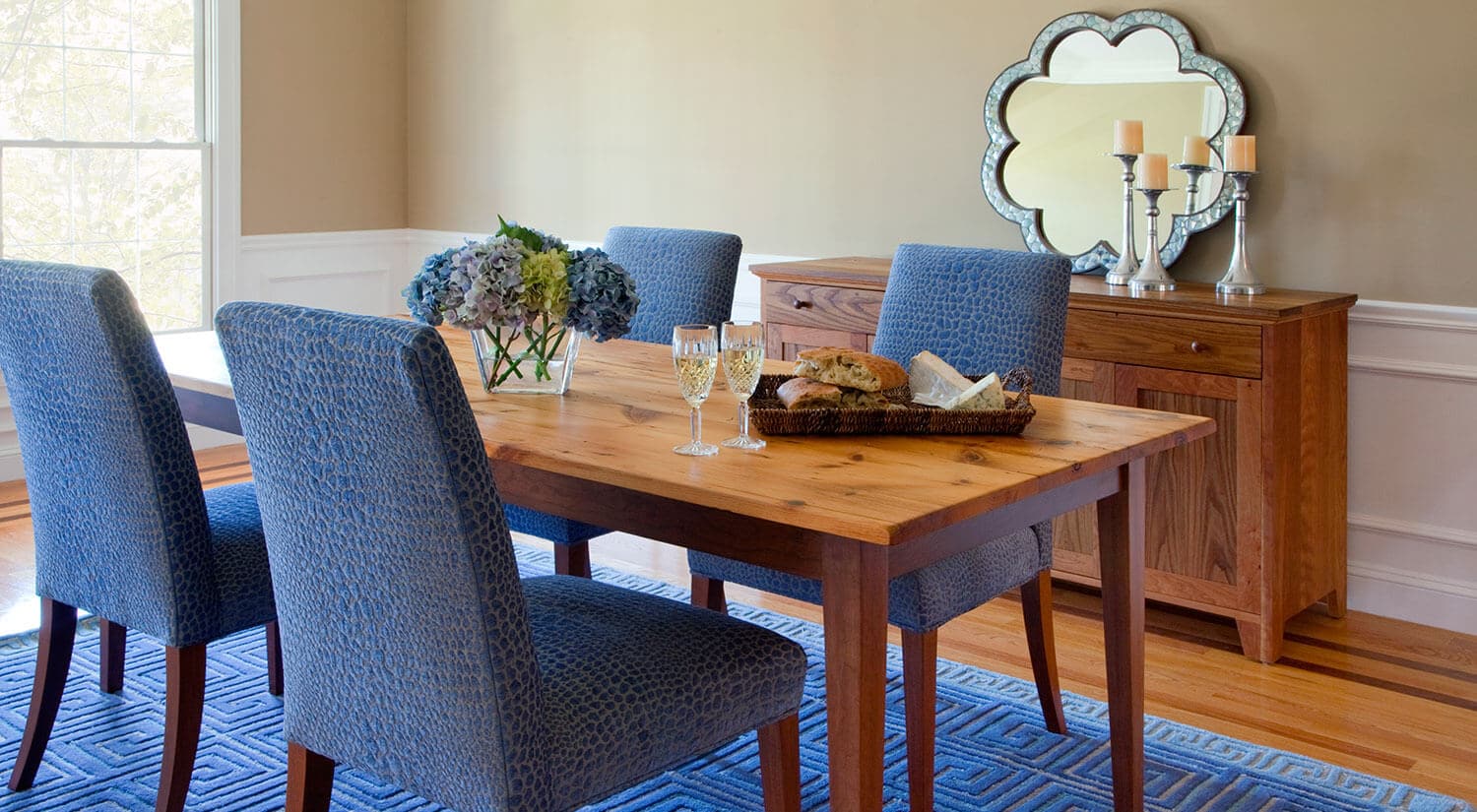
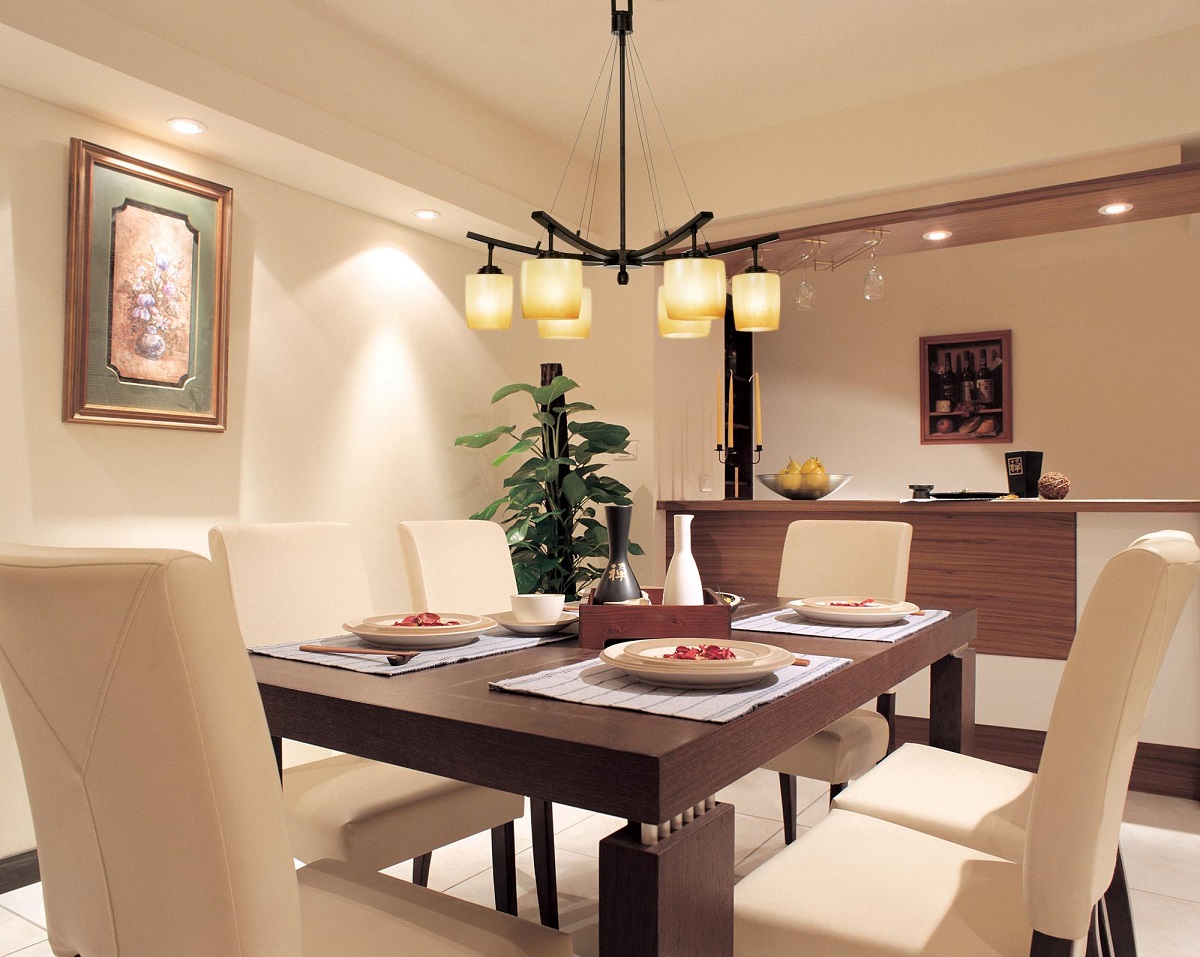
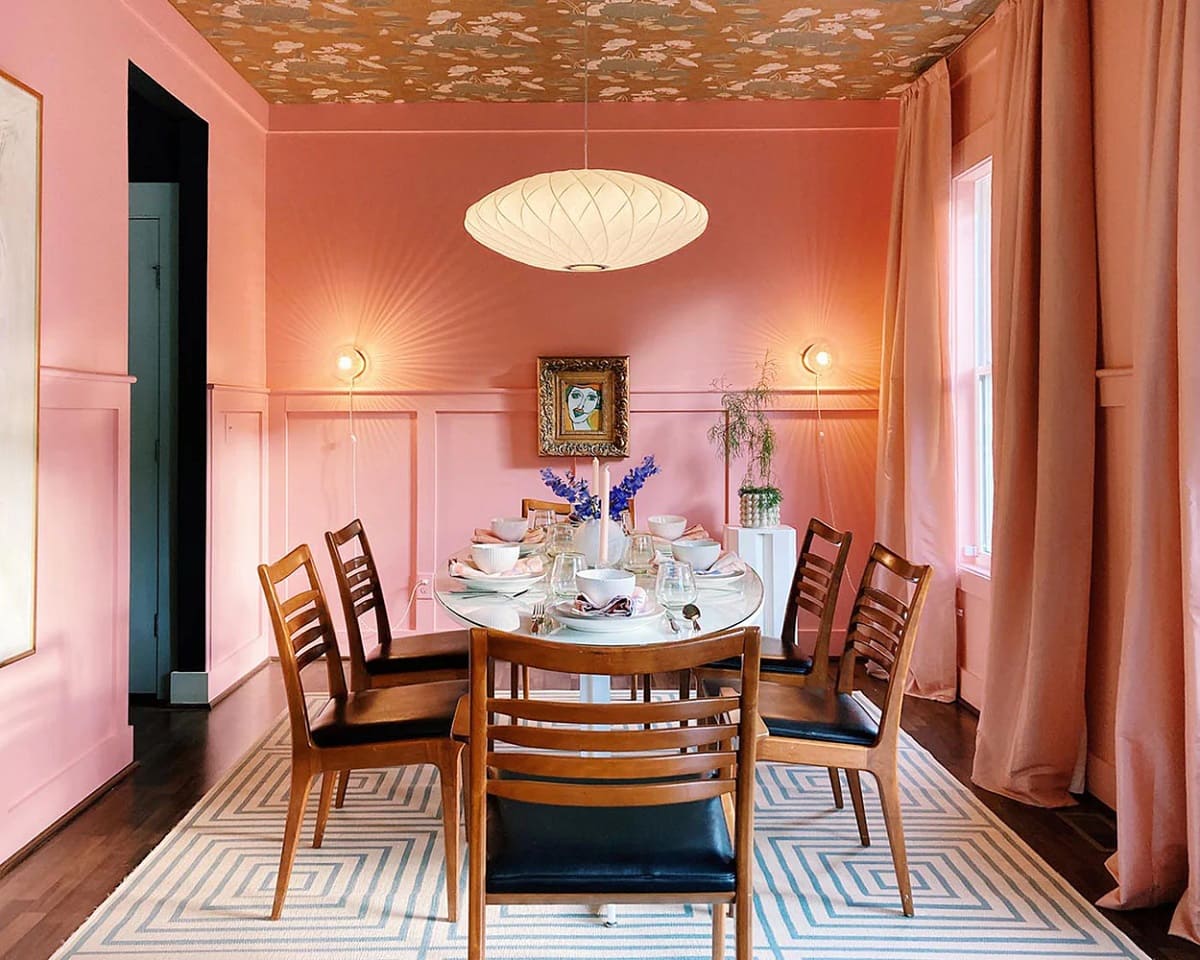
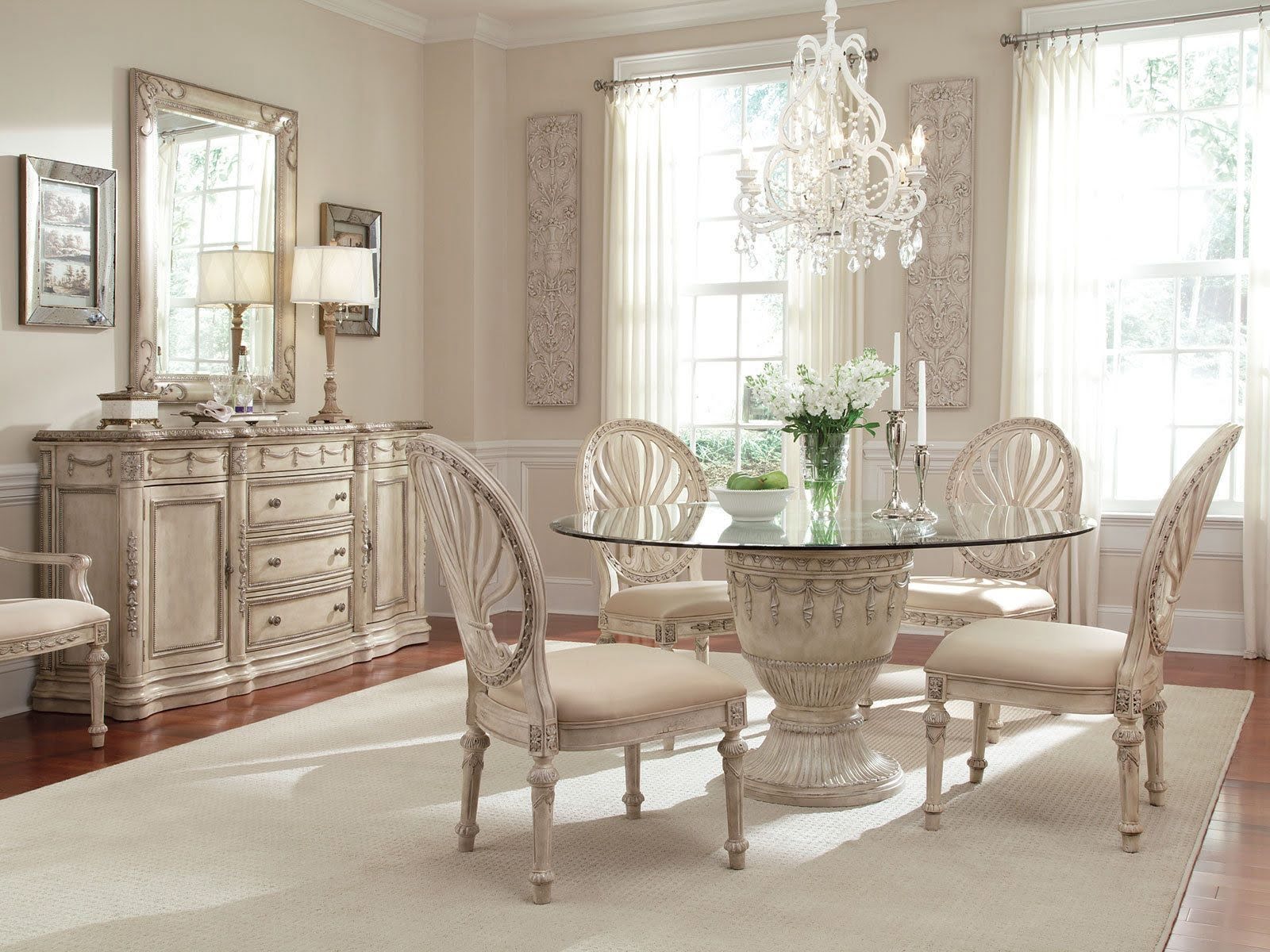
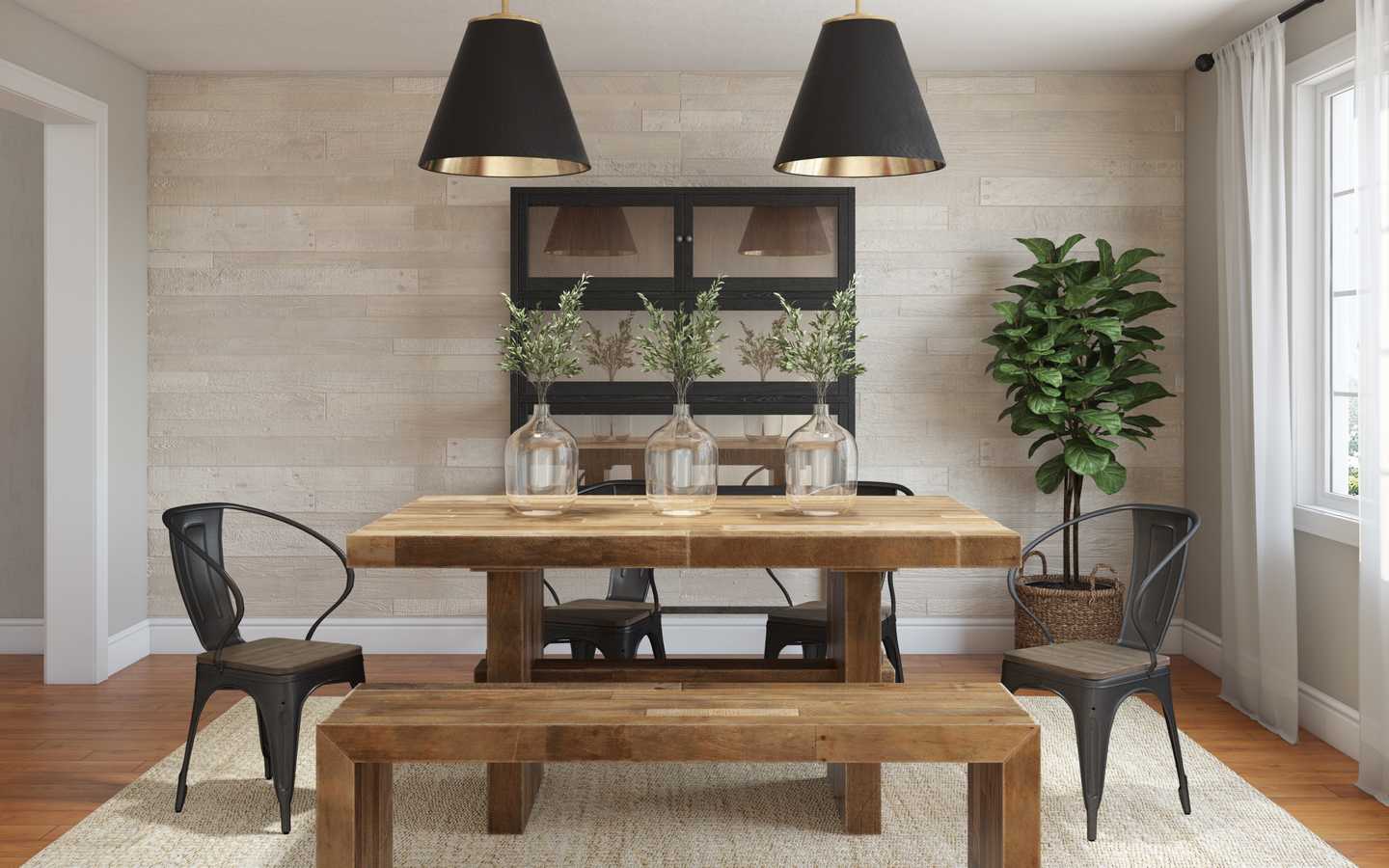
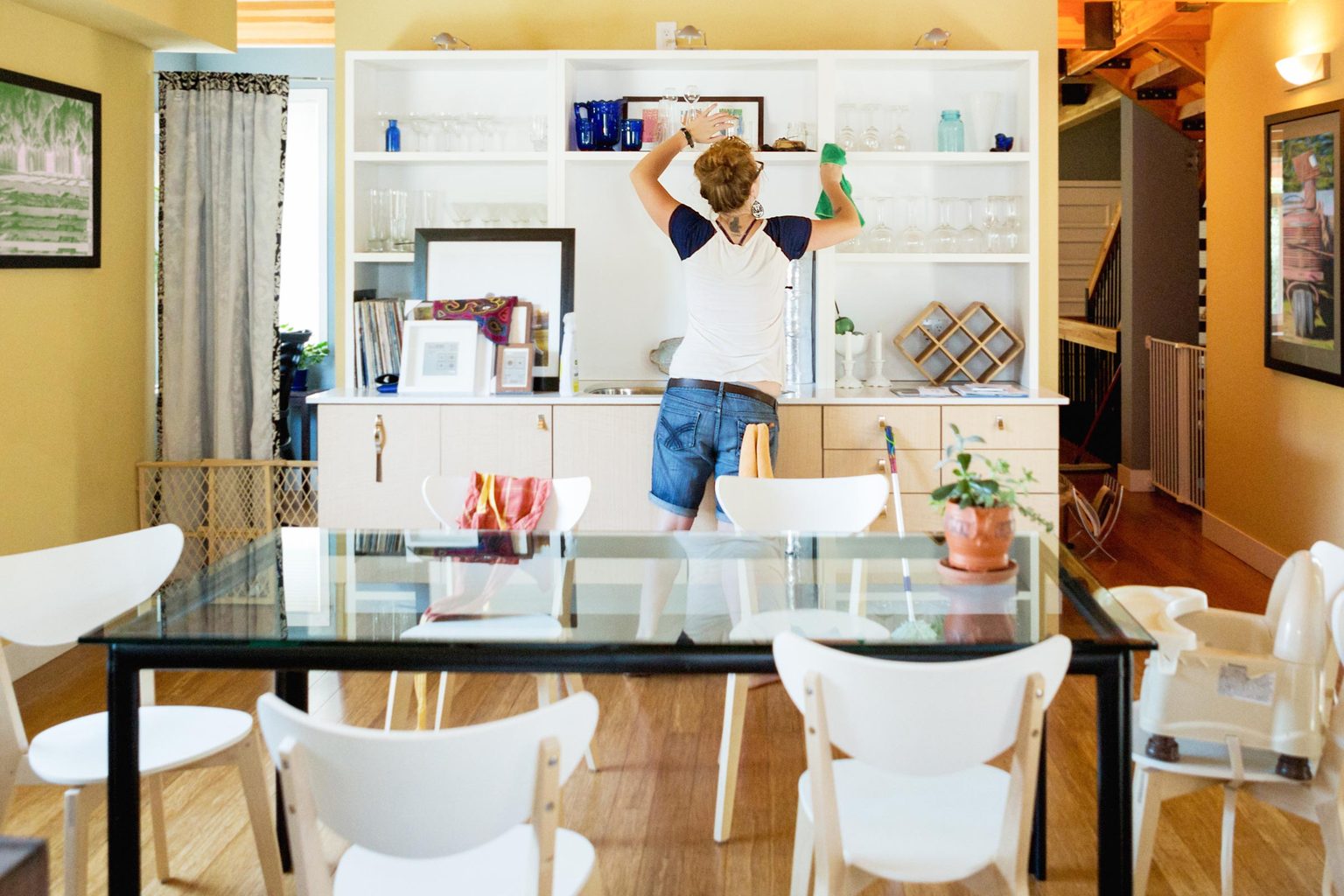

0 thoughts on “What Is In The Center Of The Dining Room Table?”